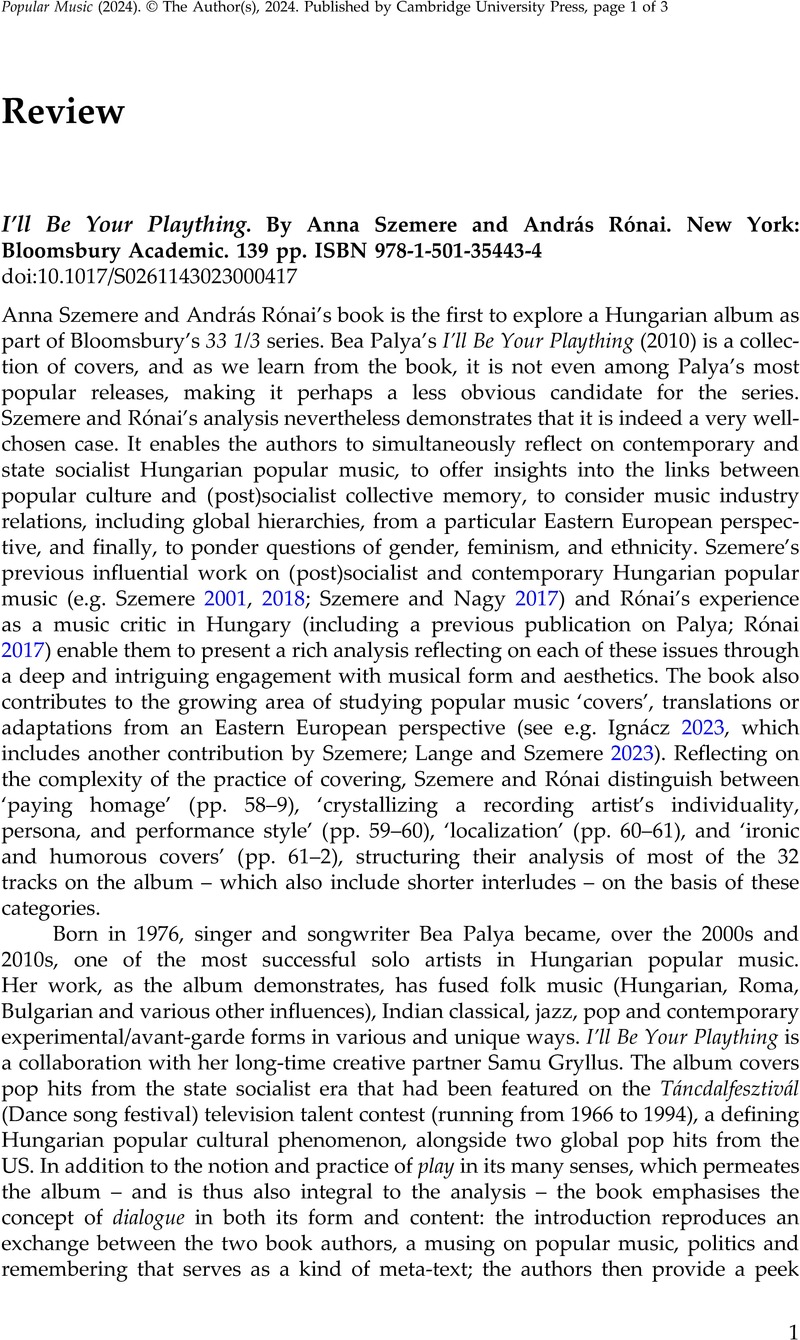No CrossRef data available.
Article contents
I'll Be Your Plaything. By Anna Szemere and András Rónai. New York: Bloomsbury Academic. 139 pp. ISBN 978-1-501-35443-4
Review products
I'll Be Your Plaything. By Anna Szemere and András Rónai. New York: Bloomsbury Academic. 139 pp. ISBN 978-1-501-35443-4
Published online by Cambridge University Press: 05 February 2024
Abstract
An abstract is not available for this content so a preview has been provided. Please use the Get access link above for information on how to access this content.

- Type
- Review
- Information
- Copyright
- Copyright © The Author(s), 2024. Published by Cambridge University Press
References
Fisher, M. 2014. Ghosts of My Life. Writings on Depression, Hauntology and Lost Futures (Winchester, Zero Books)Google Scholar
Ignácz, Á. 2023. Translation, Adaptation, and Intertextuality in Hungarian Popular Music (Lausanne, Peter Lang)CrossRefGoogle Scholar
Lange, B. R., and Szemere, A. 2023. ‘Dialogue with a legend: Musical engagements with the songs of Katalin Karády,’ in Translation, Adaptation, and Intertextuality in Hungarian Popular Music, ed. Ignácz, Á. (Lausanne, Peter Lang), pp. 61–83Google Scholar
Reynolds, S. 2010. Retromania. Pop Culture's Addiction to Its Own Past (New York, Faber and Faber)Google Scholar
Rónai, A. 2017. ‘The insecure village girl who found success, and her gentle deconstructions: Bea Palya,’ in Made in Hungary: Studies in Popular Music, ed. Barna, E. and Tófalvy, T. (New York, Routledge), pp. 99–110Google Scholar
Stanyek, J., and Piekut, B. 2010. ‘Deadness: Technologies and the intermundane,’ TDR: The Drama Review, 54/1, pp. 14–38CrossRefGoogle Scholar
Szemere, A. 2001. Up from the Underground. The Culture of Rock Music in Postsocialist Hungary (University Park, PA, The Pennsylvania State University Press)Google Scholar
Szemere, A., and Nagy, M. K. 2017. ‘Setting up a tent in the “New Europe”: The Sziget Festival of Budapest,’ in Made in Hungary: Studies in Popular Music, ed. Barna, E. and Tófalvy, T. (New York, Routledge), pp. 15–25Google Scholar
Szemere, A. 2018. ‘Let's turn Hegel from his head onto his feet: Hopes, myths, and memories of the 1960s in Tamás Cseh's Musical Album „A Letter to My Sister”,’ Slavic Review, 77/4, pp. 881–9CrossRefGoogle Scholar





